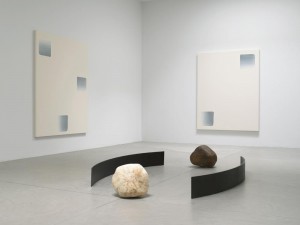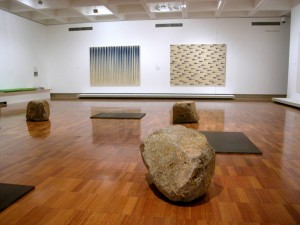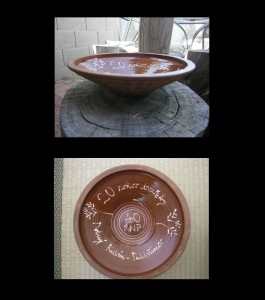Lee Ufan and Mingei + A Bowl to Remember Slovak Uprising
Lee Ufan (Korean: 이우환, Hanja: 李禹煥, Korean pronunciation: [iːuhwan] born 1936 in Haman County, in South Kyongsang province in Korea) is a Korean[1] minimalist painter and sculptor[2] artist and academic, honored by the government of Japan for having “contributed to the development of contemporary art in Japan.”[3] The art of this artist, who has long been based in Japan, is rooted in an Eastern appreciation of the nature of materials and also in modern European phenomenology. Lee, the main theorist of the Mono-ha (“School of Things”) tendency in Japan in the late 1960s and early 1970s, was trained as a philosopher.[4] As a painter, Lee significantly contributed to Tansaekhwa, or Korean monochrome painting, the first artistic movement in 20th century Korea to be promoted internationally. He advocates a methodology of de-westernization and demodernization in both theory and practice as an antidote to the Eurocentric thought of 1960s postwar Japanese society. Lee divides his time between Kamakura, Japan and Paris, France.
A bowl commemorating Slovak Uprising. Found this bowl at the thriftstore in Prague in 1997. (photos by Fung-Lin Hall)


